Case Studies is a series of work done by students researching topics surrounding architecture, urbanism and design.
van Eyck’s playgrounds were chosen to study as one of the earliest examples of networked sites forming a collective identity. Through using similar components throughout the sites, van Eyck managed to create a cohesive identity of play and imagination spread across Amsterdam. The research was done as a part of Tristan van Leur’s thesis research “Social Place Networks”, which has previously been featured on BRIDGE at here.
van Eyck’s Playground Network
Between 1947 and 1971 van Eyck designed an estimated 700-860 playgrounds in Amsterdam, forming a massive city-wide network of activity. These places shaped an entire generation, and radically shifted the approach to urbanism, turning the top-down modernist approach of the time on its head.
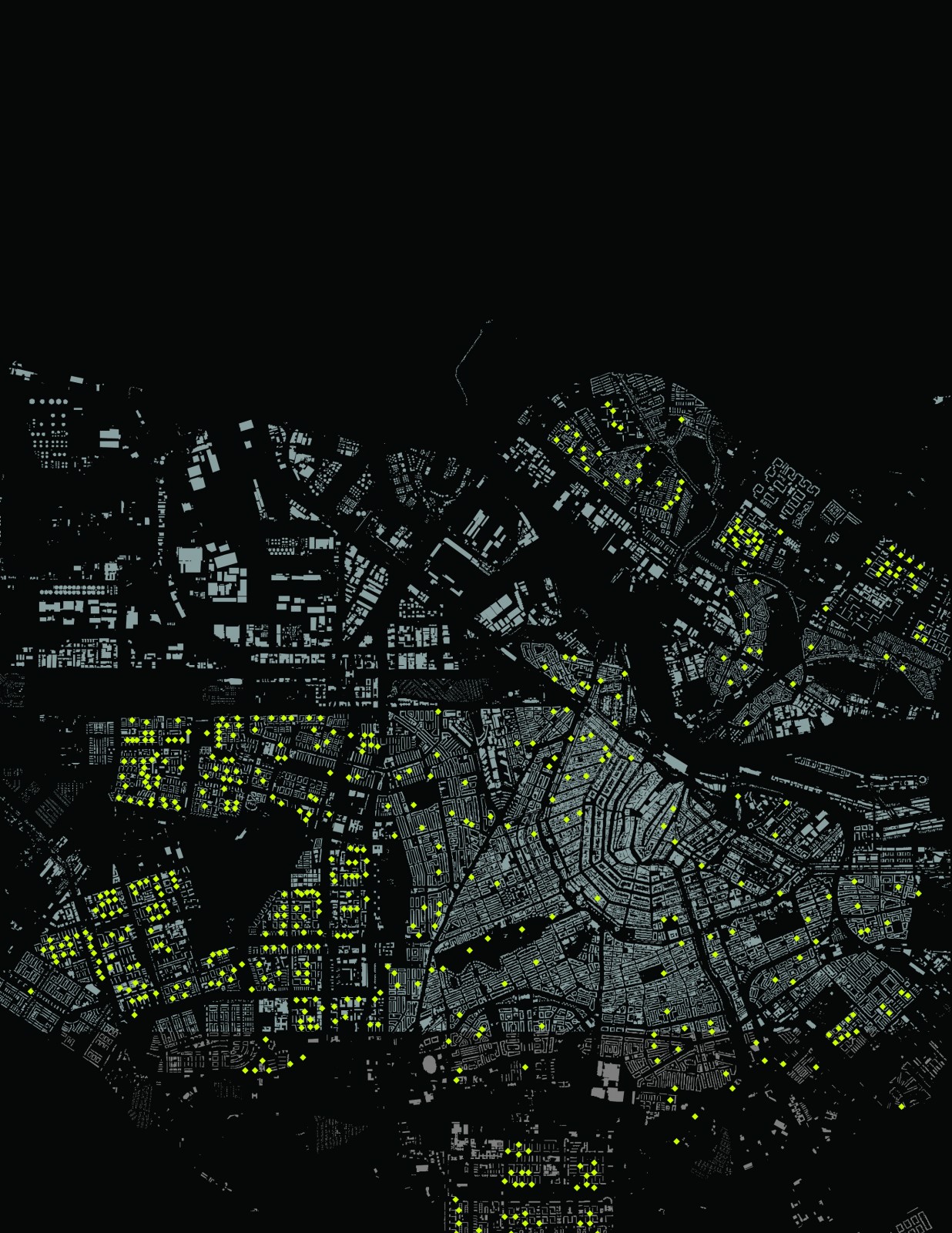
Map of Playground designed by van Eyck in Amsterdam
Urban spaces into Urban Places
van Eyck was thrust onto these playground projects when he first started with the Division of Public works. The goal of his work was to take advantage of the empty public space within the city, to create places for children to play. The city designated the sites, and Aldo van Eyck was given the task to transform each of the spaces them into a places of play. van Eyck rebelled against the idea of top-down authoritative systems, and instead approached each site within the network as an individual, customized parcel.
van Eyck’s Machine
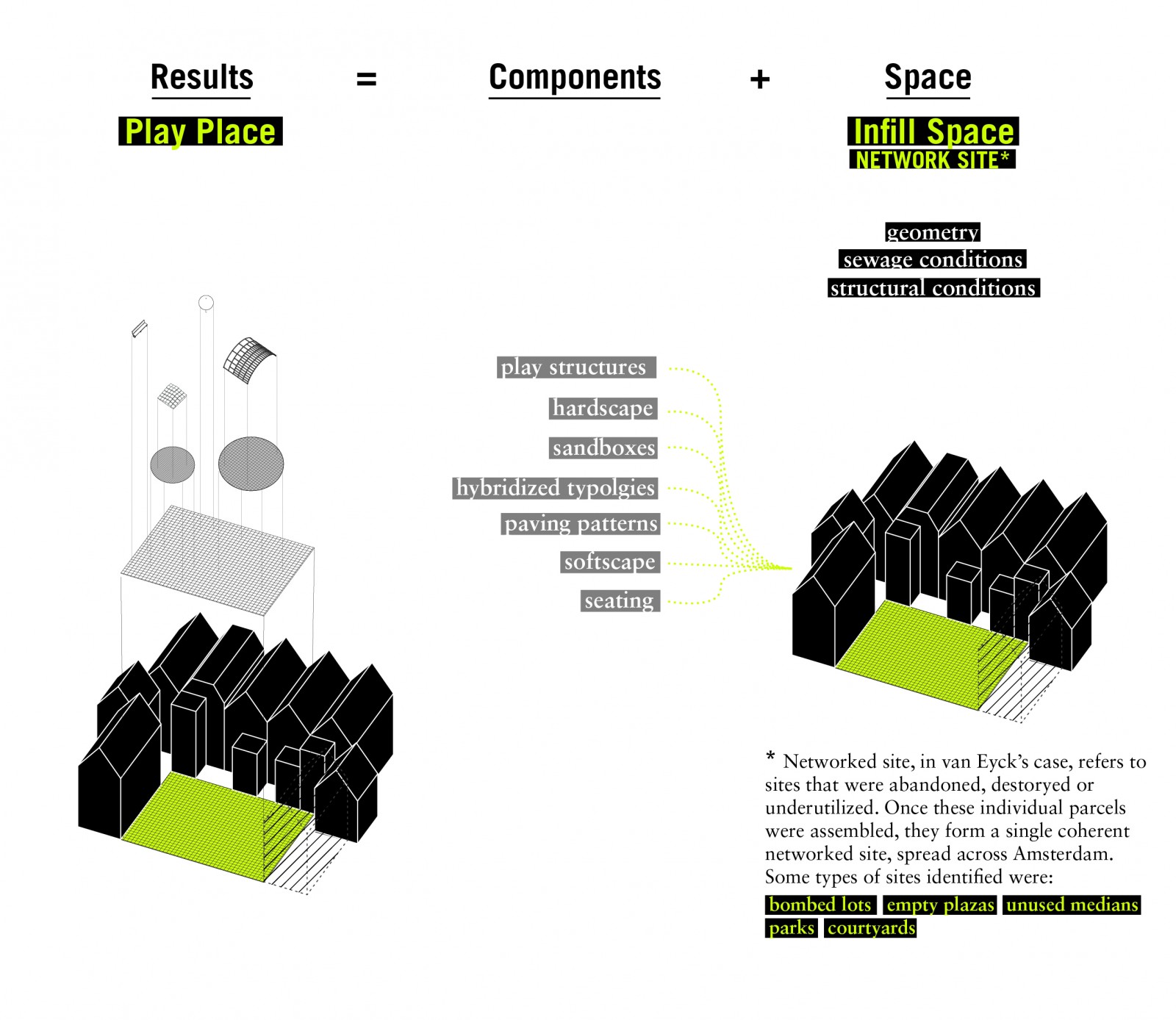 Aldo van Eyck tried to avoid the mass production of the playgrounds, despite their massive and fast growing quantity. He attempted to standardized components but allow himself to experiment and create evolving solutions. He created a framework for his designs; he brought together play objects, and spacial elements to create a group of constantly changing, site specific compositions.
Aldo van Eyck tried to avoid the mass production of the playgrounds, despite their massive and fast growing quantity. He attempted to standardized components but allow himself to experiment and create evolving solutions. He created a framework for his designs; he brought together play objects, and spacial elements to create a group of constantly changing, site specific compositions.

The generalized typologies of sites that van Eyck would use to create his playgrounds: (from left) Boulevard, Courtyard, Plaza, and Park
The result was a networked identity spread across a city. The sites turned wasted spaces within post-war Amsterdam into lively spaces of spontaneity and recreation.


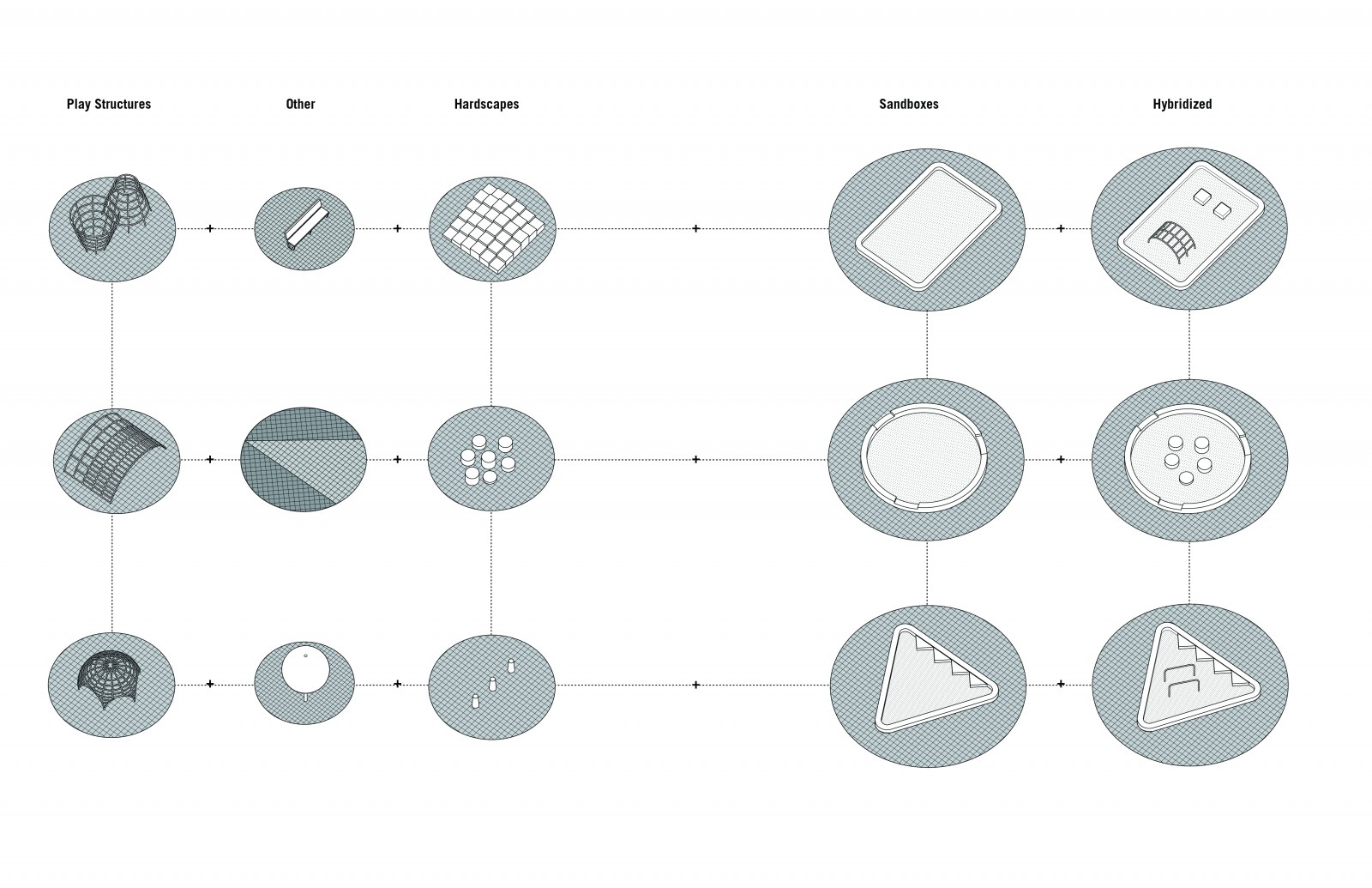
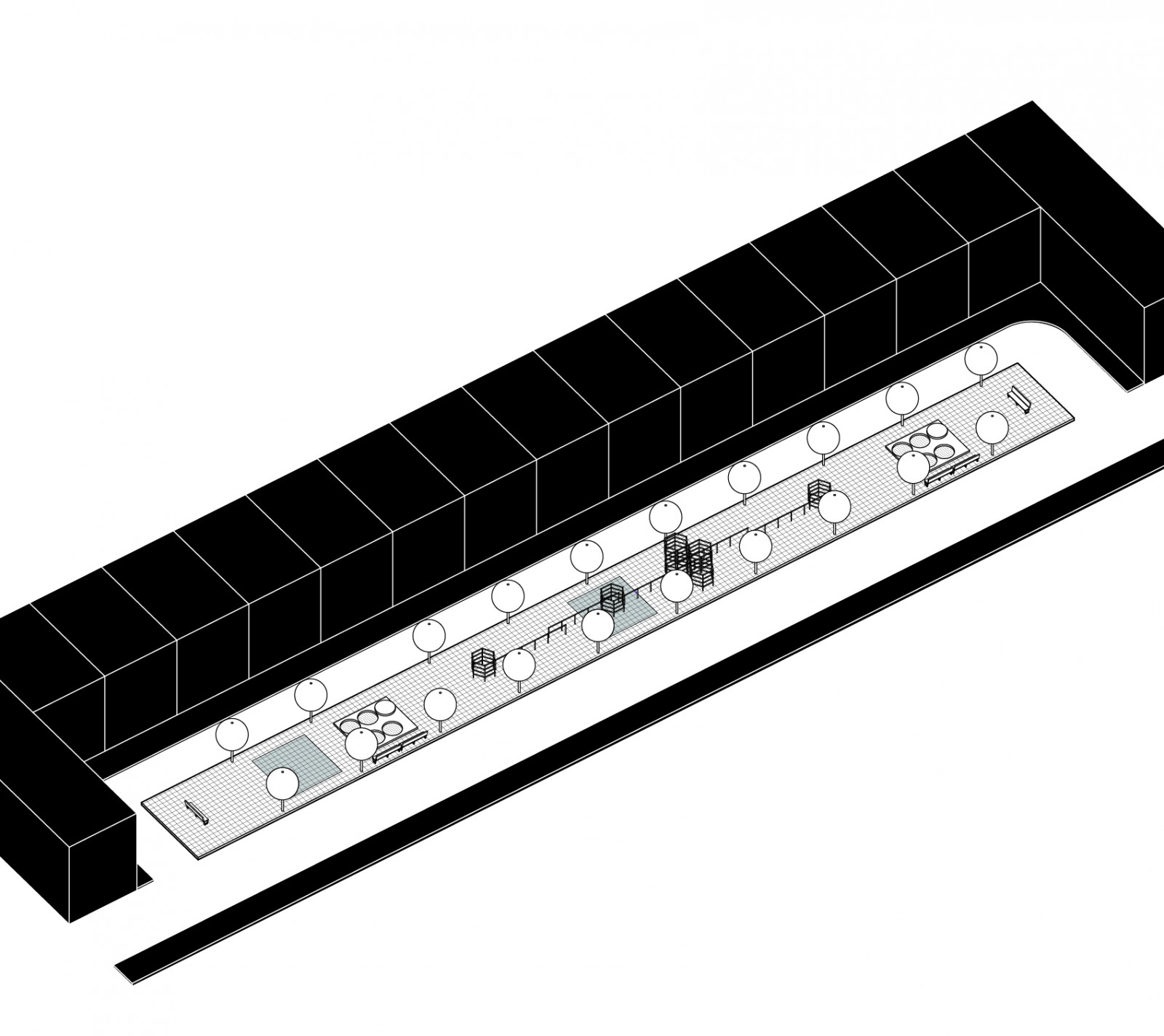
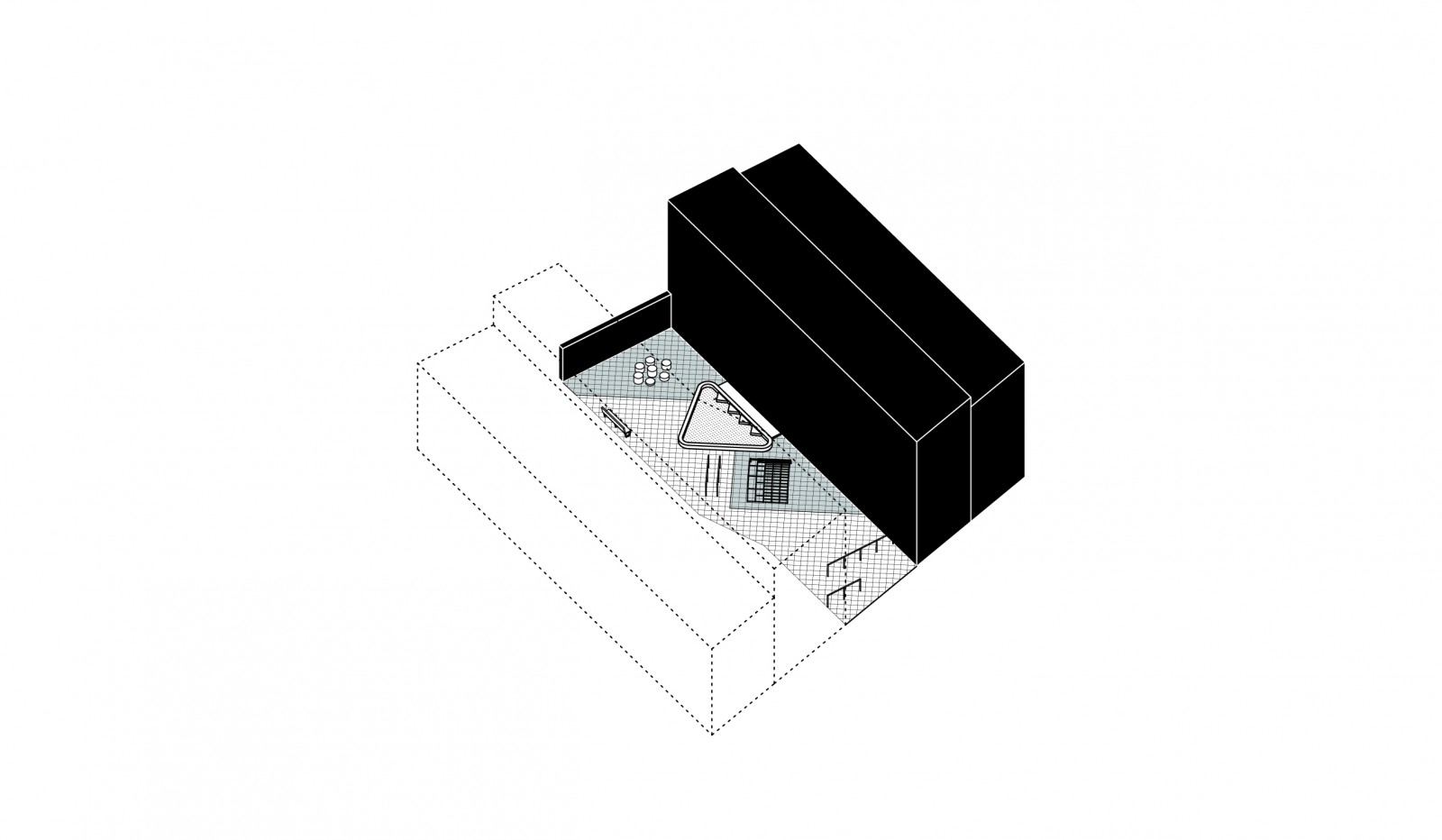
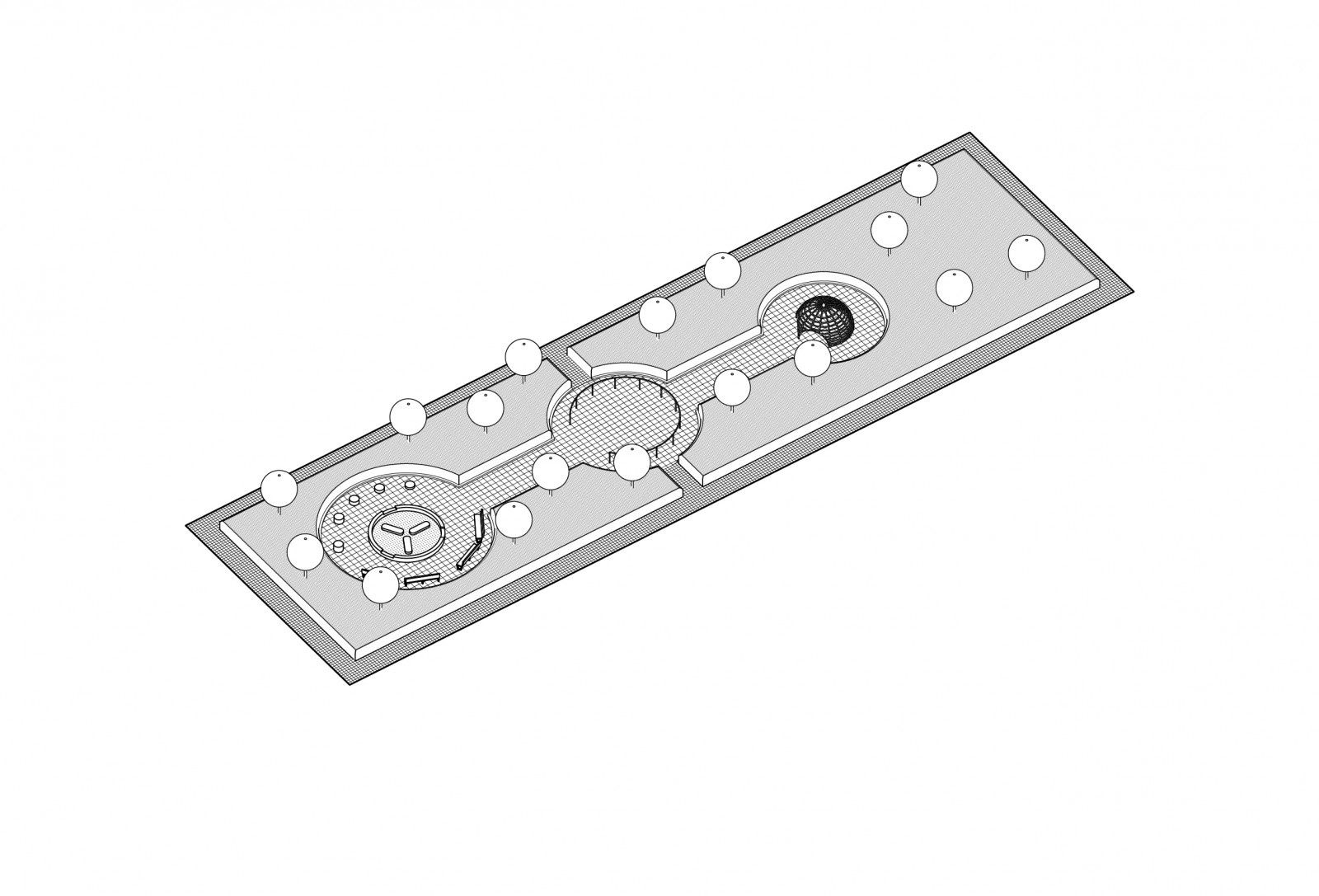
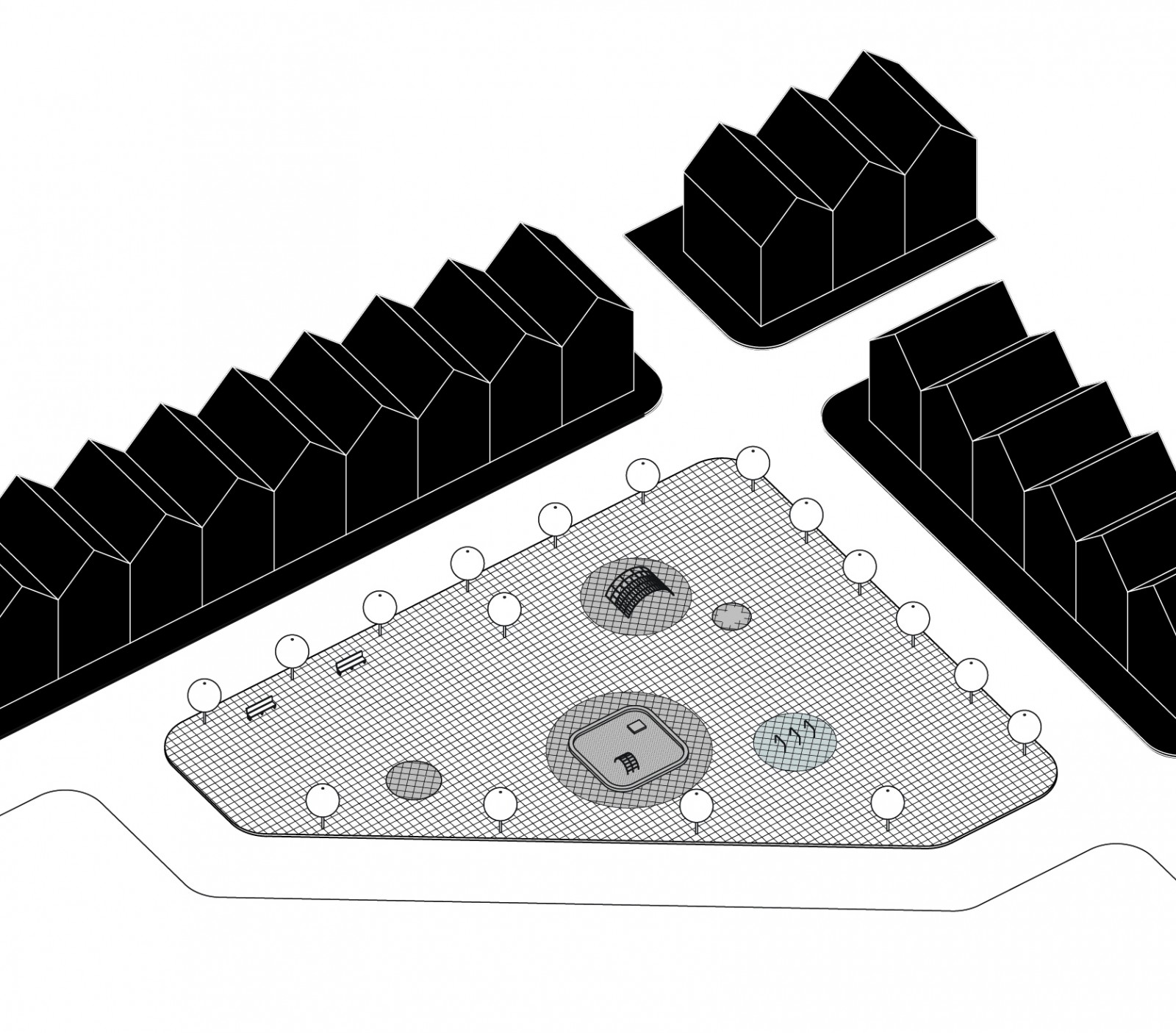

3 Comments
Leave your reply.